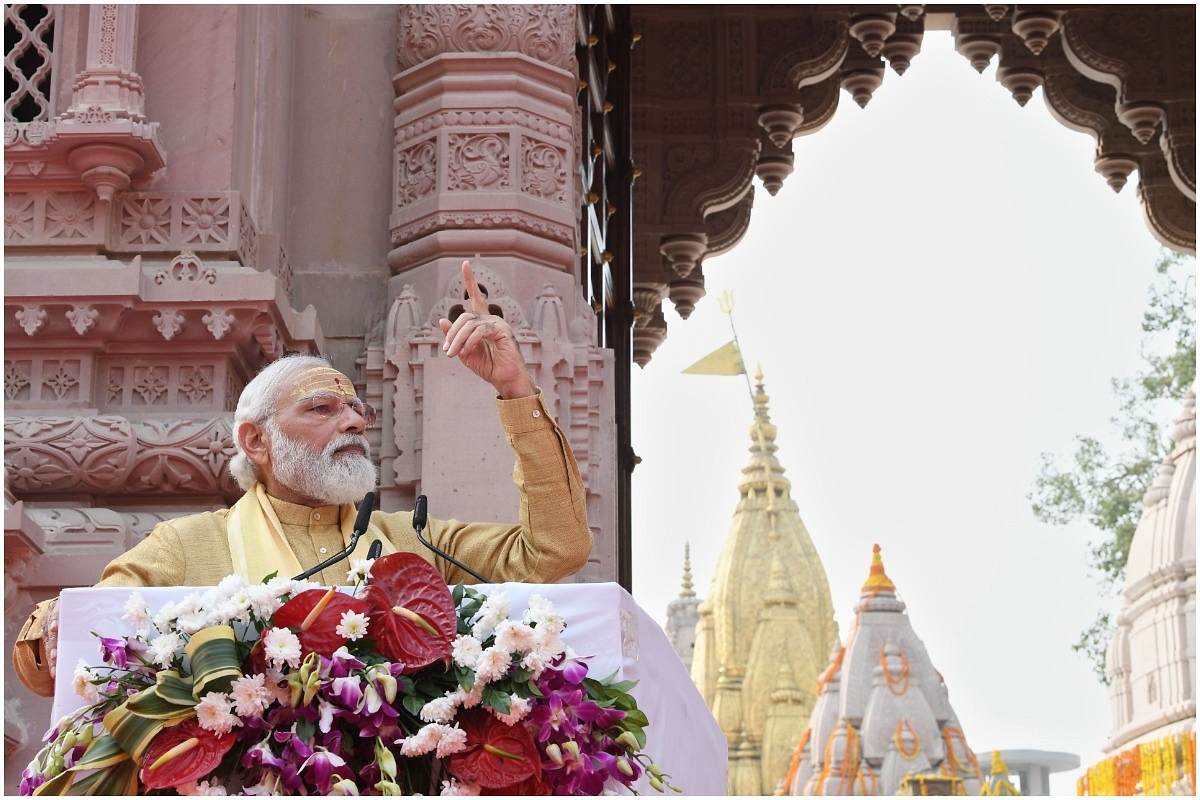Culture
It's Not Either-Or: PM Modi Showed India Doesn't Have To Choose Between Economic And Cultural Mega Projects; It Can Do Both
- In an earlier age, not too long ago, traditional Hindu temples were neglected while industrial units were hailed as the 'temples' of India. This was an attempt to create a false binary between Hindu religiousness and the necessary economic and social progress of India.
- Without naming, PM Modi gave a strong rebuke to that ignorance today.

Prime Minister Narendra Modi at the Kashi Vishwanath corridor complex (PMO)
The twelve Jyotirlingas present the underlying cultural and spiritual unity of India. Each of these lingas in different linguistic regions of India have been sung, served and protected from devotees from different parts of India.
We all know how Somnath stands as the symbol of Hindu perseverance. Countless sacrifices and endless resistance have made Somnath stand glorious today. Other Jyotirlingas, too, have been attacked and have been rebuilt.
The Mahakaleshwar temple at Ujjain, Madhya Pradesh, was destroyed by Sultan Shams-ud-din Iltutmish in the thirteenth century and was rebuilt when Maratha power ascended. It was rebuilt by general Ranoji Shinde in eighteenth century.
The Hindu national consciousness pursued the goal for five centuries, and with the acquisition of political power, the temple was rebuilt.
The Trimbakeshwar Jyotirlinga temple near Nasik was also destroyed and was rebuilt by Peshwa Balaji Baji Rao. The Kashi Vishwanath temple itself was rebuilt and given its present form under the rule of Devi Ahilyabai Holkar in the late eighteenth century.
Somnath itself was rebuilt after Independence, and the first President attended its lokarpana function.
Unfortunately after that, 'development' in India meant distancing oneself from Hindu culture. Pilgrimage centres were given the bare minimum attention.
On the other hand, ‘secular’ attractions like the memorial museums and samadhis of certain political leaders became centres of attention. Yet, the temple towns, which were becoming increasingly dirty, continued to contribute more to ‘tourism’ than all the new ‘secular’ tourist destinations.
It is in this context the Narendra Modi phenomenon happened.
The return of attention to temples with the reassertion of Hindu identity and power—from the Maratha age through the freedom movement and Somnath reconstruction is a continuous process. What PM Modi accomplished on 13 December 2021 at Kashi should be seen as as one of the highlights of this historic and civilisational movement.
In an earlier age, not too long ago, traditional Hindu temples were neglected while industrial units were hailed as the 'temples' of India. This was an attempt to create a false binary between Hindu religiousness and the very necessary economic and social progress of India.
Without naming, PM Modi gave a strong rebuke to that ignorance of the Nehruvian consensus today. He said:
What PM Modi has done through this statement is that he has embraced both the need for employing technology to bring happiness to the masses along with the cultural and spiritual values of those very people.
Kashi, the eternal city once, becomes the guiding light for the renewed development of India, a development true to the heart and core of India.
Support Swarajya's 50 Ground Reports Project & Sponsor A Story
Every general election Swarajya does a 50 ground reports project.
Aimed only at serious readers and those who appreciate the nuances of political undercurrents, the project provides a sense of India's electoral landscape. As you know, these reports are produced after considerable investment of travel, time and effort on the ground.
This time too we've kicked off the project in style and have covered over 30 constituencies already. If you're someone who appreciates such work and have enjoyed our coverage please consider sponsoring a ground report for just Rs 2999 to Rs 19,999 - it goes a long way in helping us produce more quality reportage.
You can also back this project by becoming a subscriber for as little as Rs 999 - so do click on this links and choose a plan that suits you and back us.
Click below to contribute.
Latest